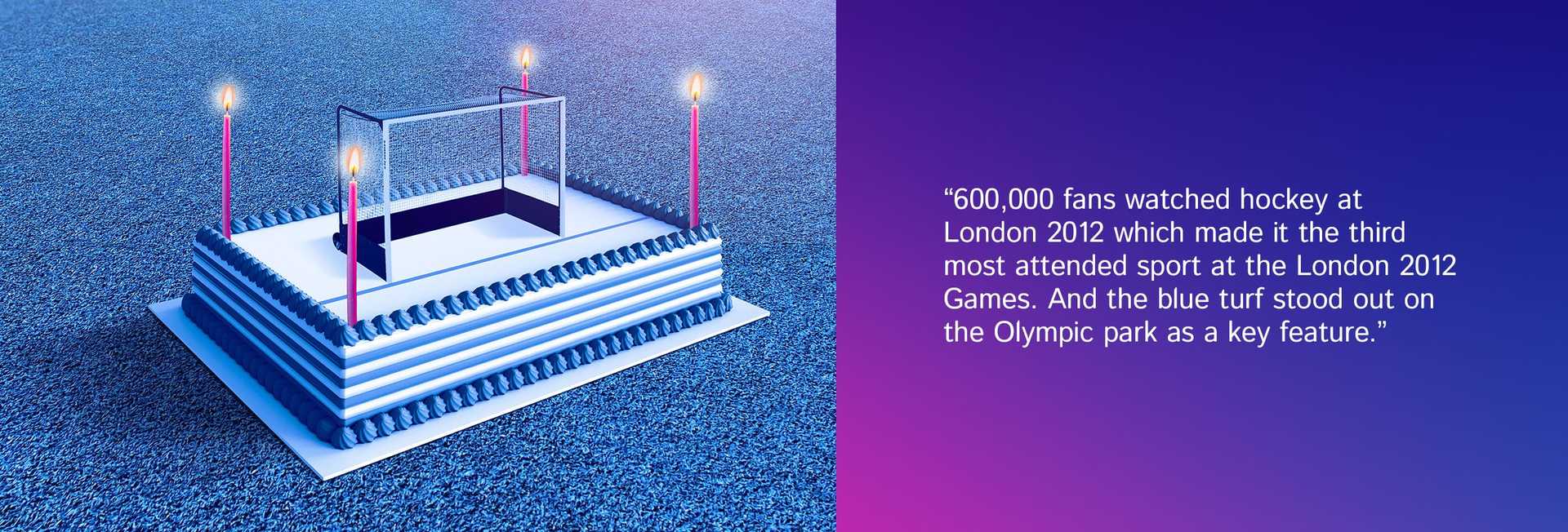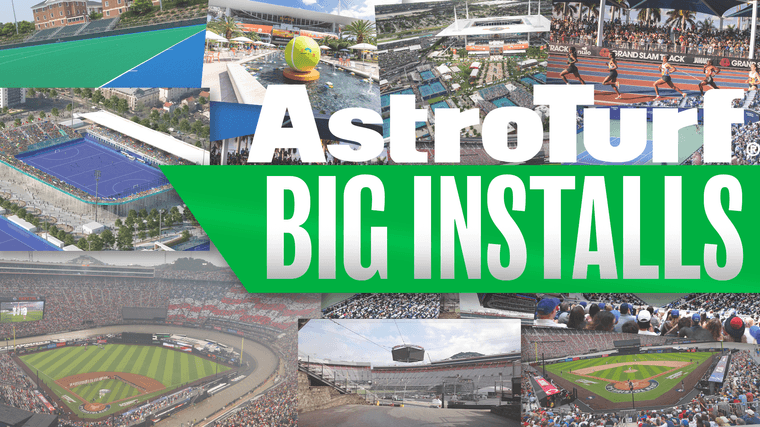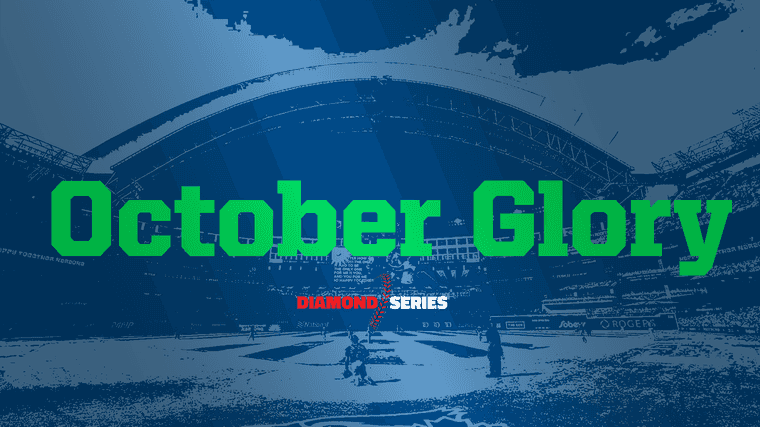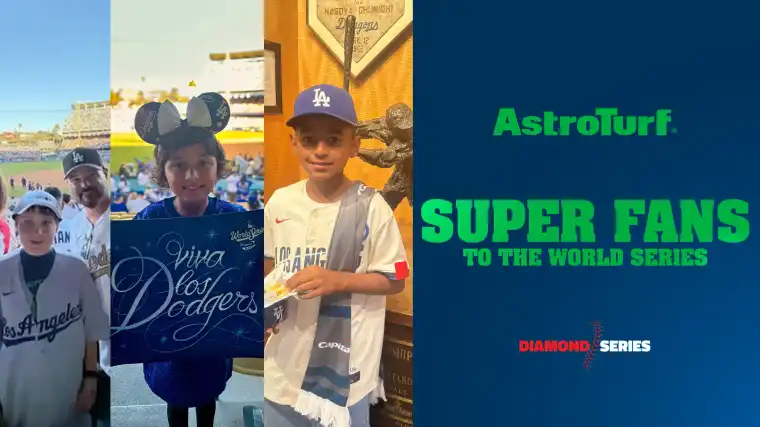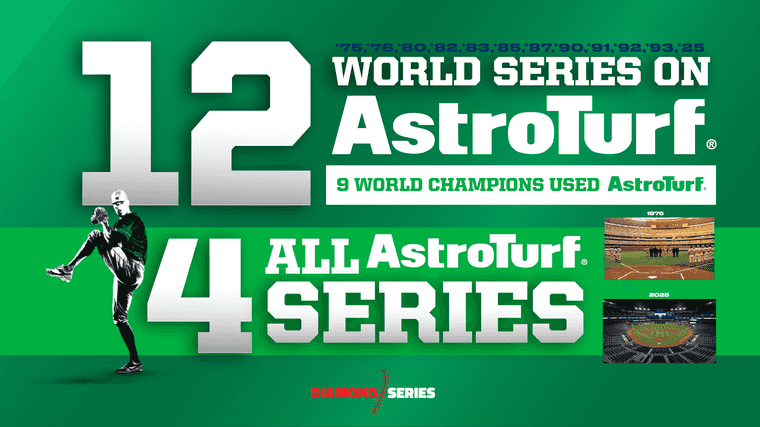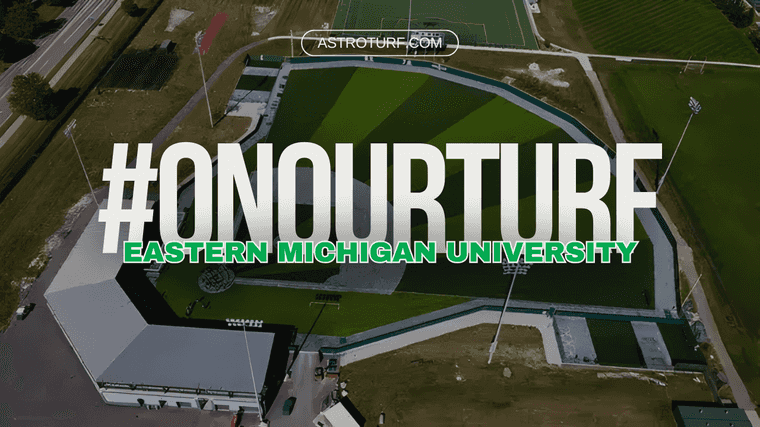DALTON, GA. – At 10am on the 18th July, 1976 the whistle blew in the opening match of the 1976 Montreal Olympics between India and Argentina. This whistle rang out around the hockey world. It was Turf Day One.
Day One featured 4 matches. India won 4-0; the next match saw Australia defeat Malaysia 2-0 which was followed by Pakistan 5 v Belgium 0, and finally West Germany and NZ played out a 1-1 draw.
So, the first official Day One of hockey turf, featured 4 matches and 13 goals.
Watch ‘The Surface’, a unique hockey documentary, where hockey stars including Jamie Dwyer, Luciana Aymar and Ric Charlesworth discuss hockey’s transformation from grass to turf.
The Turf
The turf was made by AstroTurf in the US using nylon fibers. It rained during the Montreal Olympics and the turf played much better. Hence hockey’s wet turfs were accidentally born.
AstroTurf’s hockey fields, with their iconic green color, paved the way and were used at Olympic Games and World Cups. The nylon technology continued to evolve and is still used by hockey around the world.
The Turf Natives
By the turn of the century, 25 years later, turf had become commonplace, and a new generation of players, raised on turfs, emerged. These were hockey’s first turf-natives, bringing an explosion of skills and speed.
“Has any other sport totally changed something as fundamental as the surface? Hockey’s move was bold and a brilliant success. The game became more dynamic and thrilling as the potential of a perfect surface was realized.”
London – More Noise and Color
By 2010, stars like Luciana Aymar and Jamie Dwyer were reinventing the game. Hockey was fast, nonstop, and skillful. At London 2012, hockey moved from green to Poligras London Blue, designed to broaden the game’s appeal and provide greater visibility for TV audiences.
The transformation was a success. With 600,000 fans watching, hockey was the third most-attended sport at the London 2012 Games, and the blue turf became a standout feature.
Hockey’s New Frontiers
Hockey’s innovative spirit continues, seeking new experiences and opportunities for players, fans, and broadcasters while committing to environmental challenges.
Poligras Tokyo GT, developed for Tokyo 2020, was made from 60% sugar cane. This technology evolved further into Poligras Paris GT zero turf, hockey’s first carbon zero turf, for the Paris 2024 Games.
Hockey’s transformation is unique. Has any other sport totally changed something as fundamental as the surface? The bold move made the game more dynamic and thrilling, realizing the potential of a perfect surface.
July 18 is a date to celebrate the joy of hockey for players worldwide. With fast running, 3D skills, 360-degree fluidity, slap hits, tomahawks, drag flicks, and shave tackles, hockey has no limits.
Happy Turf Day to the game we love.
For more information about AstroTurf and its innovative turf solutions, please visit astroturf.com.
About AstroTurf®
For athletes and sport enthusiasts, AstroTurf® has redefined the way the game is played. The inventor of synthetic turf, AstroTurf® offers advanced, state-of-the-art, multi-sport and specialized synthetic turf systems with proprietary engineered technologies. To learn more, visit astroturf.com.
